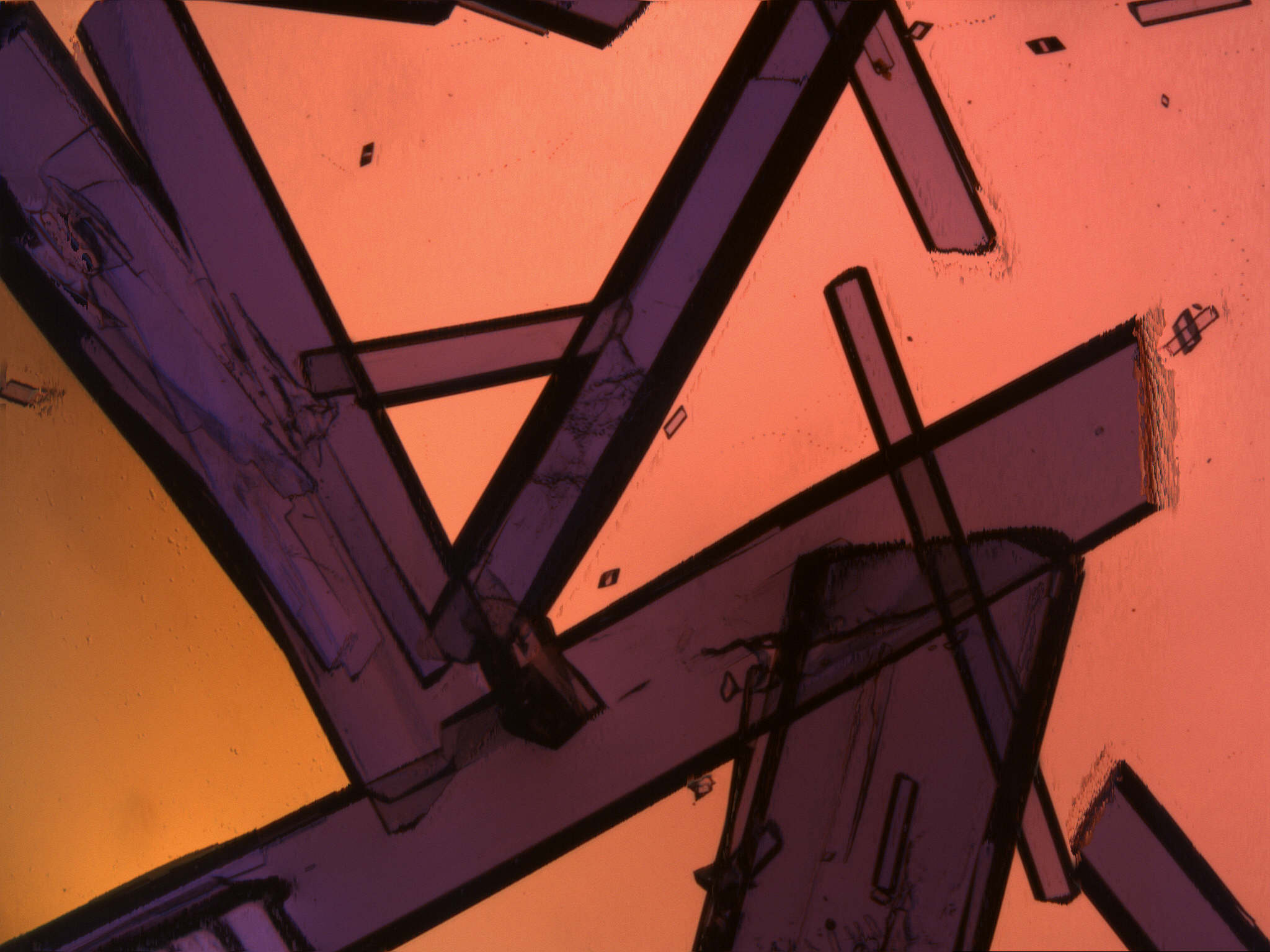
Kaliumtris(oxalato)chromate
Fonds der Chemischen Industrie
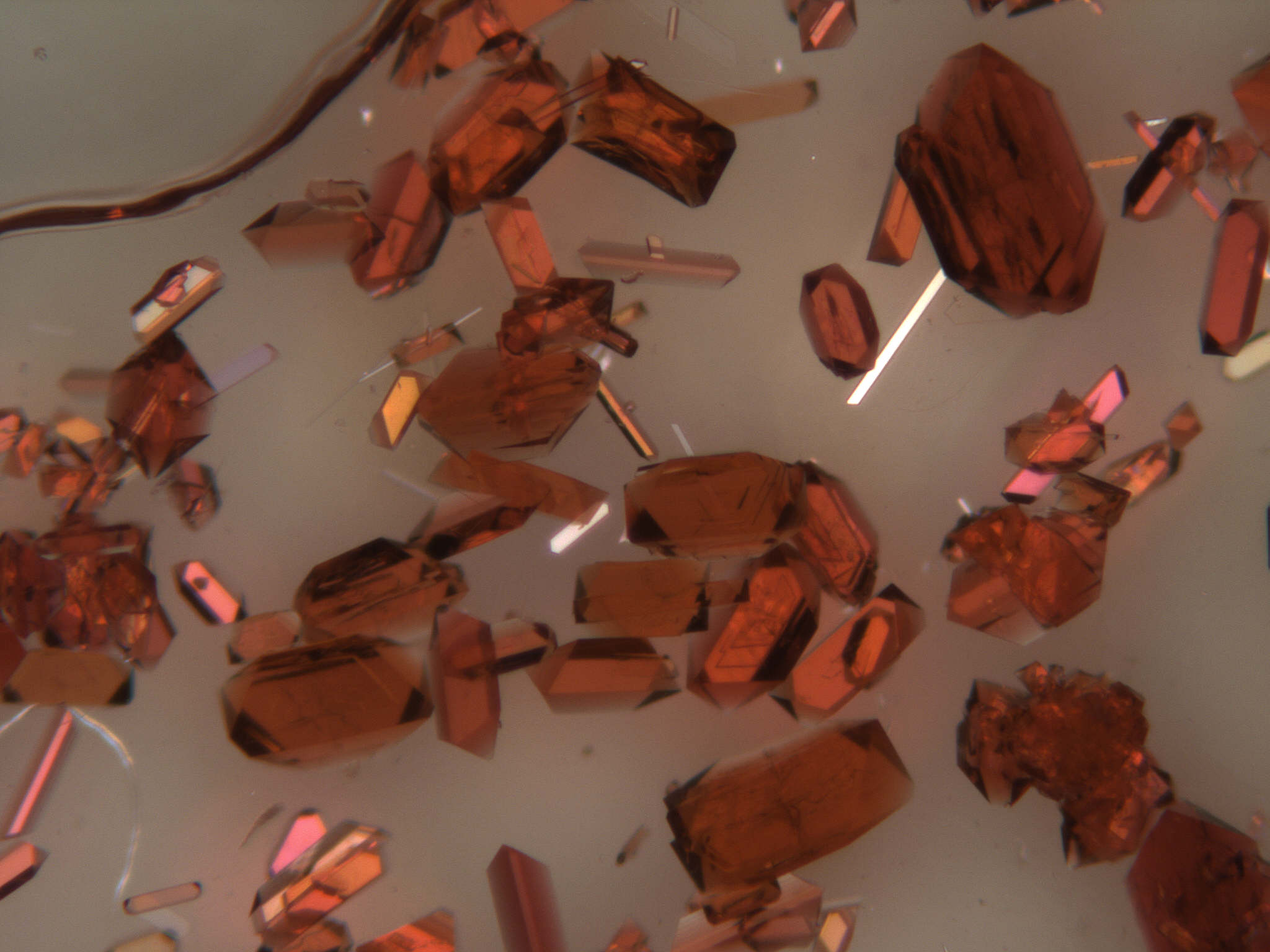
Cobalt(II)tartrate
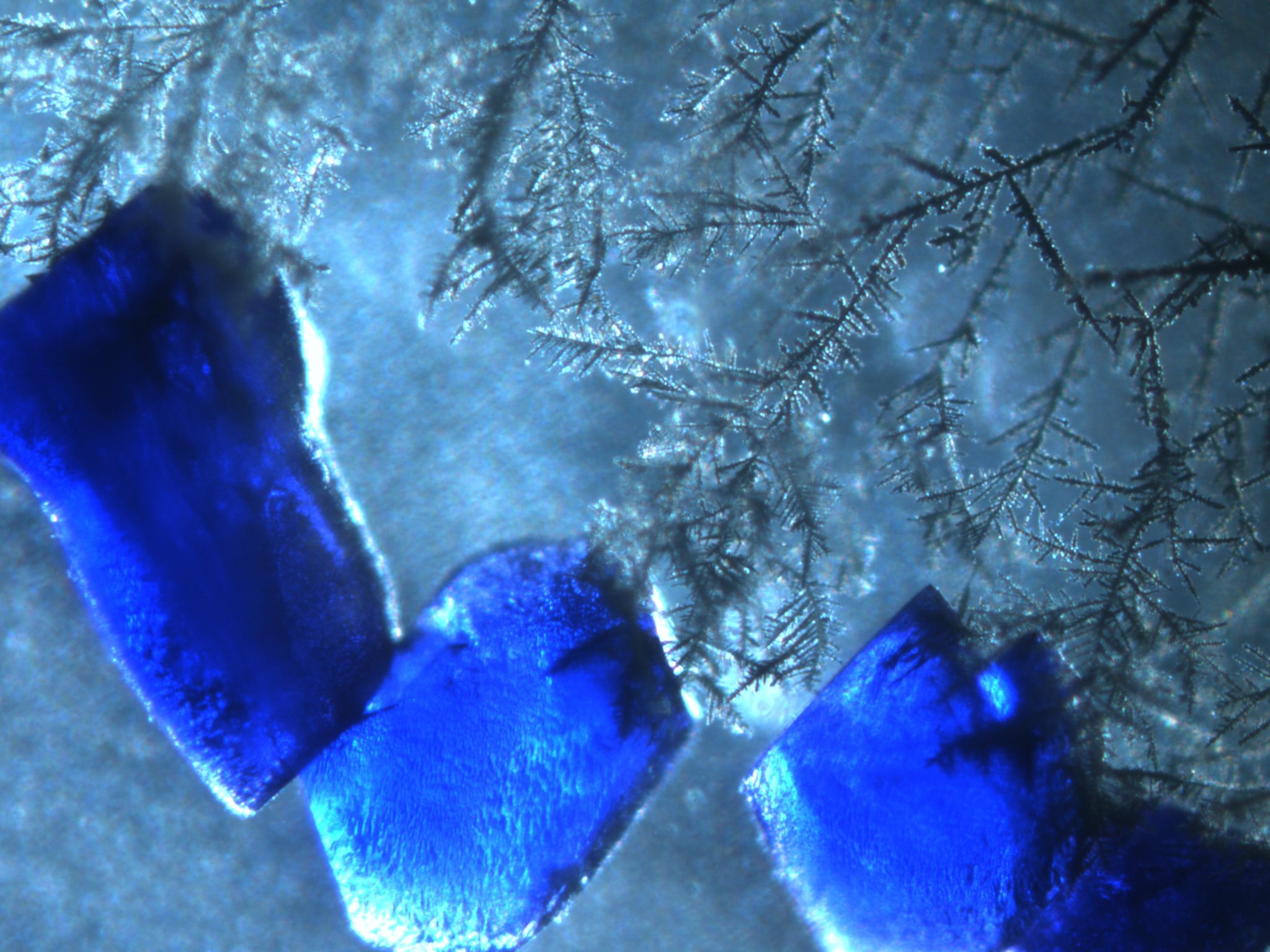
Tetrammincoppernitrate crystals at a silver tree
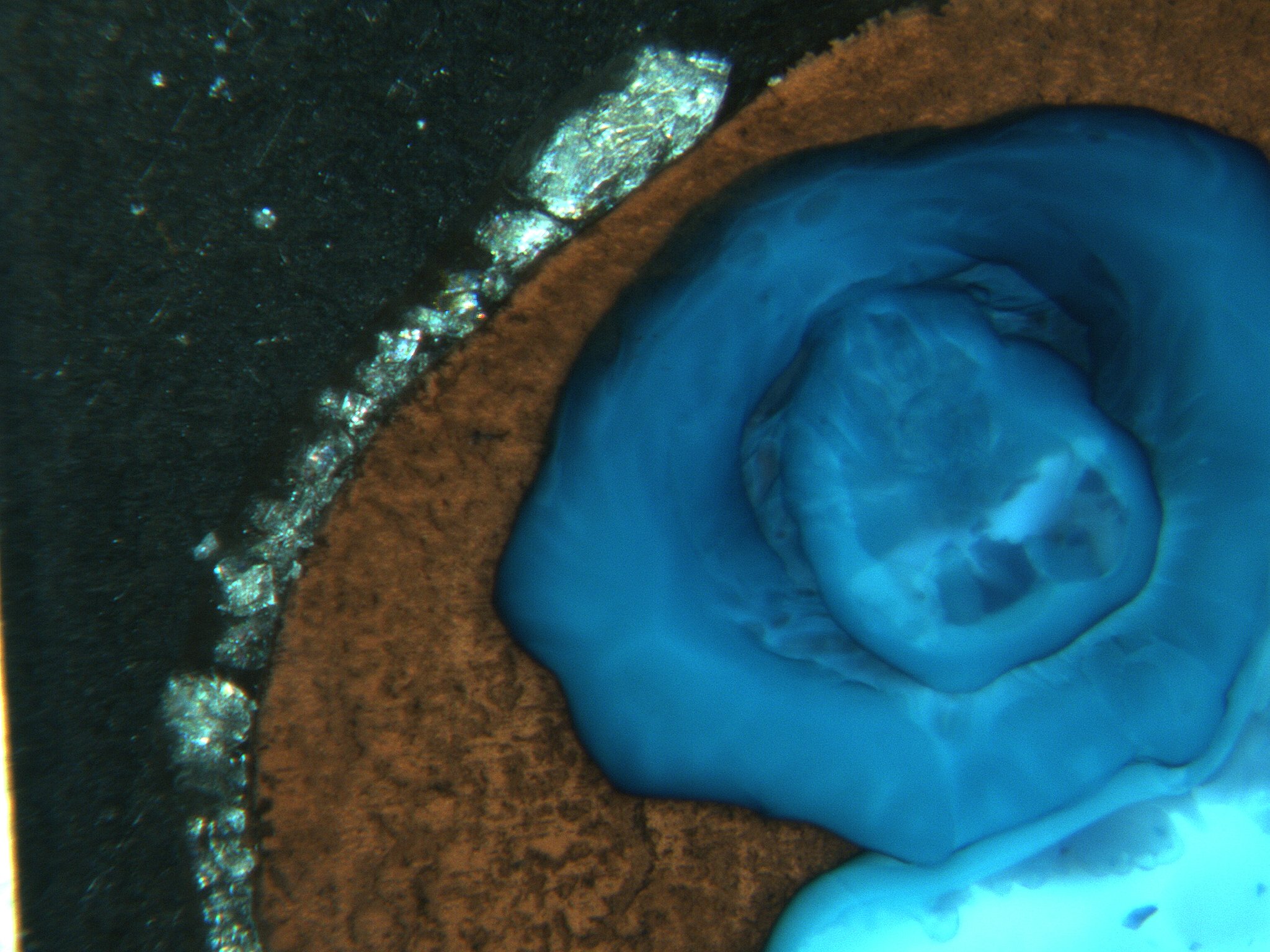
Deposition of copper on an iron surface and proof of dissolved iron(II)
ions with the Prussian Blue reaction. At the copper-iron borderline
crystalline iron(II)sulfate heptahydrate can be seen.
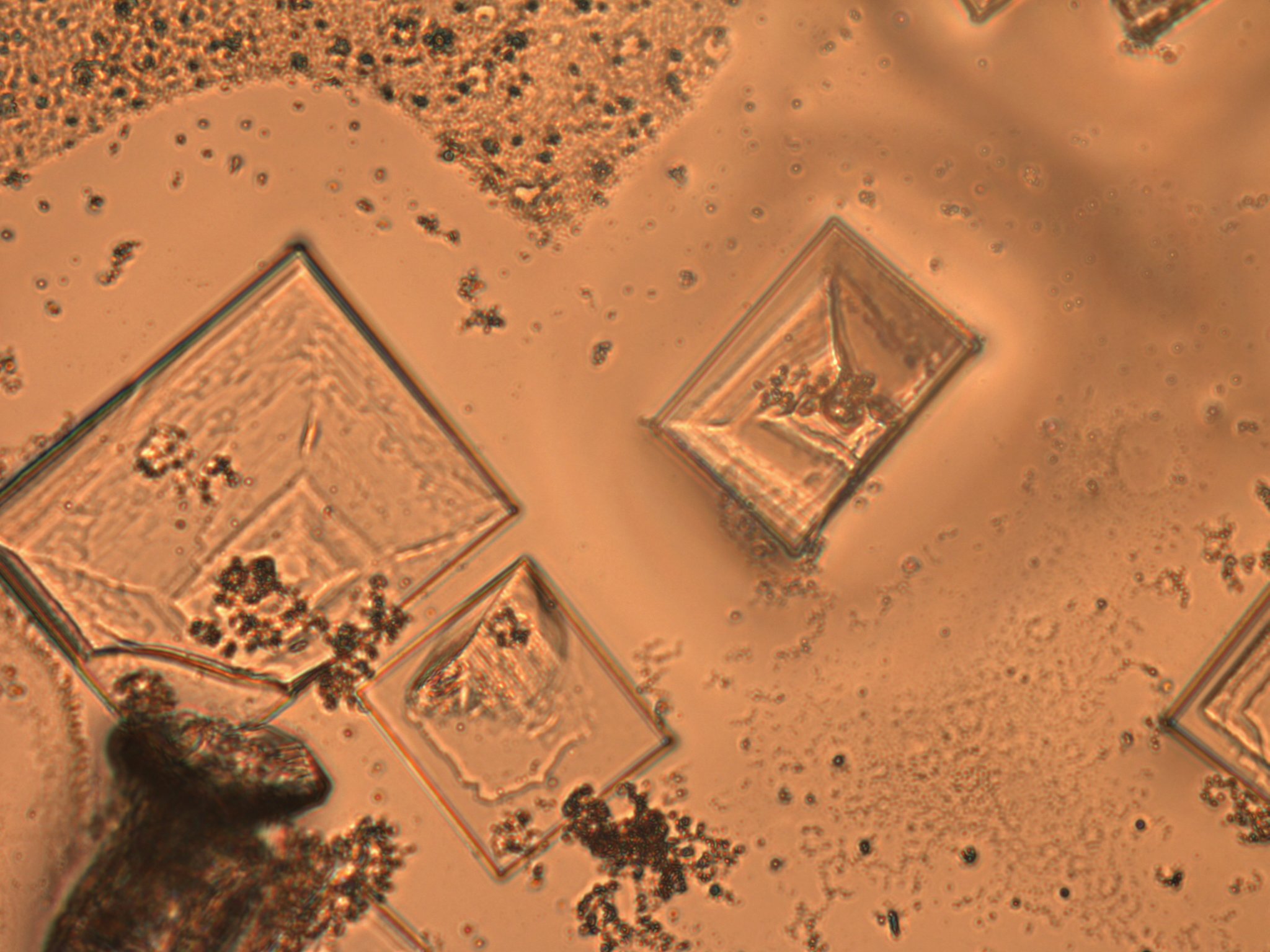
Orthorhombic sulfur from toluene
Subjects looked at so far:
Corrosion, Metal precipitation, Redox reactions
Complex chemistry
Acid/Base-Indicators, Redox indicators
Dyes: Azo dyes, Anthrachinone dyes, Triphenylmethane dyes, Indigoid dyes, Azine dyes, Phthalocyanine dyes
Fluorescence, Chemoluminescence
Chemical gardens
Liesegang rings
Probing metal cations
Main group elements and halides thereof
Oscillating reactions
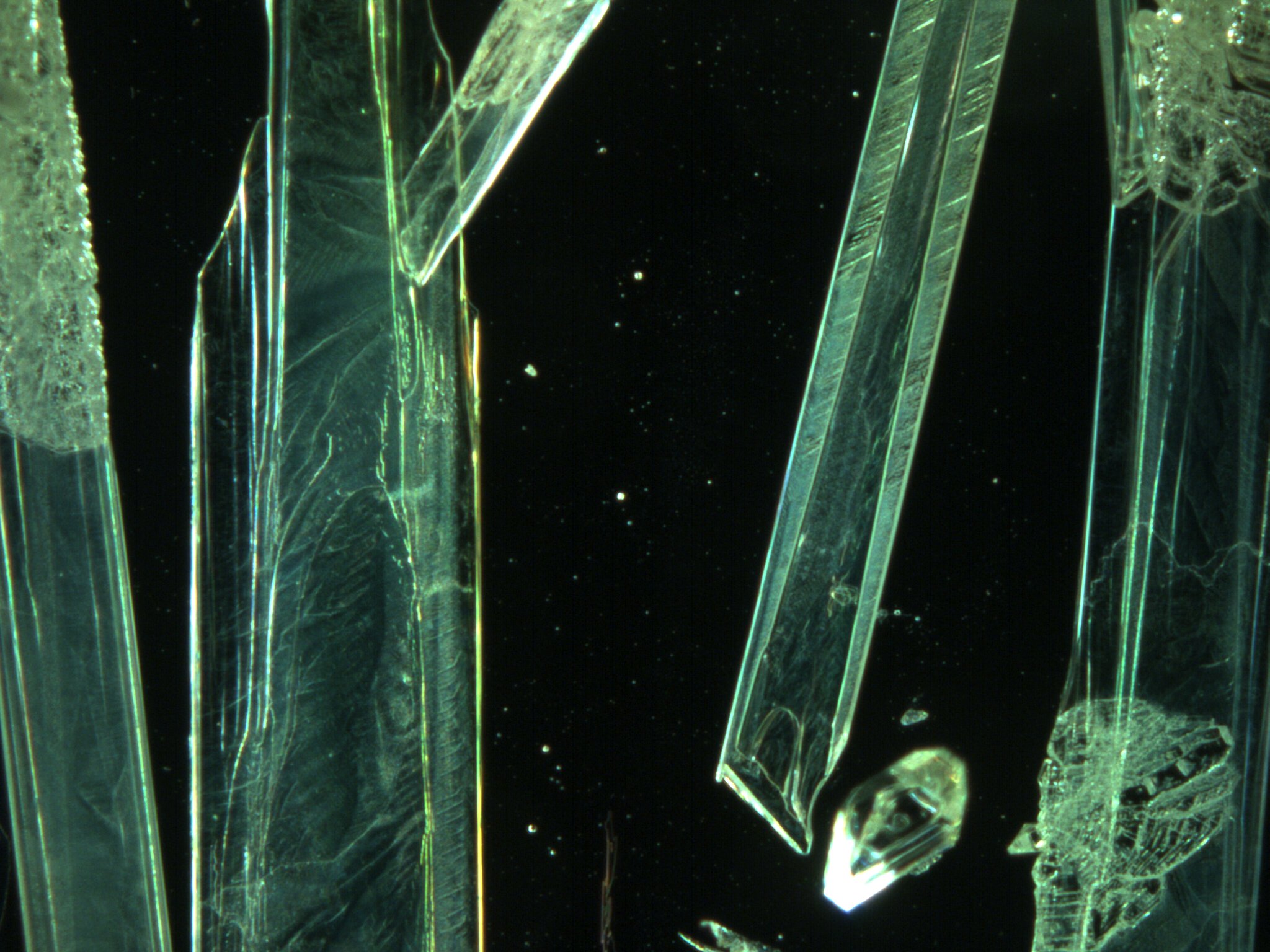
Phase transition of monoklinic to orthorhombic sulfur
Offers for Cooperation:
Laboratory practicals for high school students
Seminars for high school teachers
Once a year the chemistry department of the TU Kaiserslautern offers a two day seminar, where high school teachers hear lectures from different chemical disciplines. The inorganic chemistry department participates with a topical lecture and with a laboratory practical on chemical experiments under the microscope.
Lectures for high school classes:
The Micro-Lab Kaiserslautern offers lectures to subjects given by interested high school teachers, if there is suitable material available in the Micro-Lab. If reservation is made well in advance, materials can be prepared by the students working in the Micro-Lab.
This offer holds preferentially (not exclusively) for schools in the western palatinate area.
Support for partner schools:
One goal of the Micro-Lab Kaiserslautern is the advancement of microscope use in high schools for the observation of chemical experiments. In addition to the seminars for high school teachers questions can be answered and problems may be solved by the Micro-Lab staff upon request.
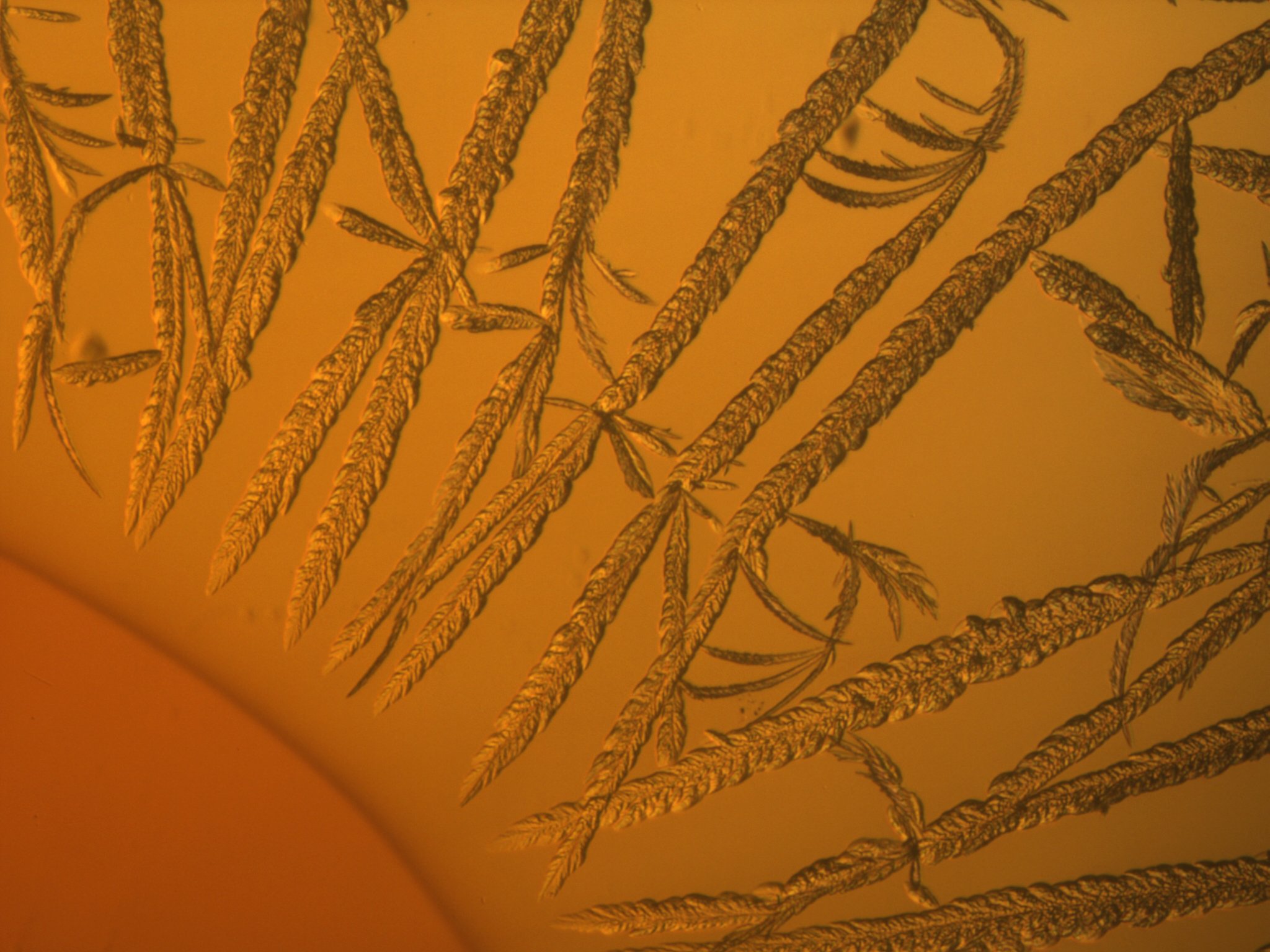
Crystallization of Phenolphthaleine
Coworkers in the Micro-Lab
8. Oliver Schmidt, 2004
7. Sandra Kirch, 2004
6. Inga Wolf, 2004
5. Stefanie Schneider, 2004
4. Nicole Junker, 2004
3. Elmar Wolfer, 2003
2. Christian Schlick, 2003
1. Frank Decker, 2002
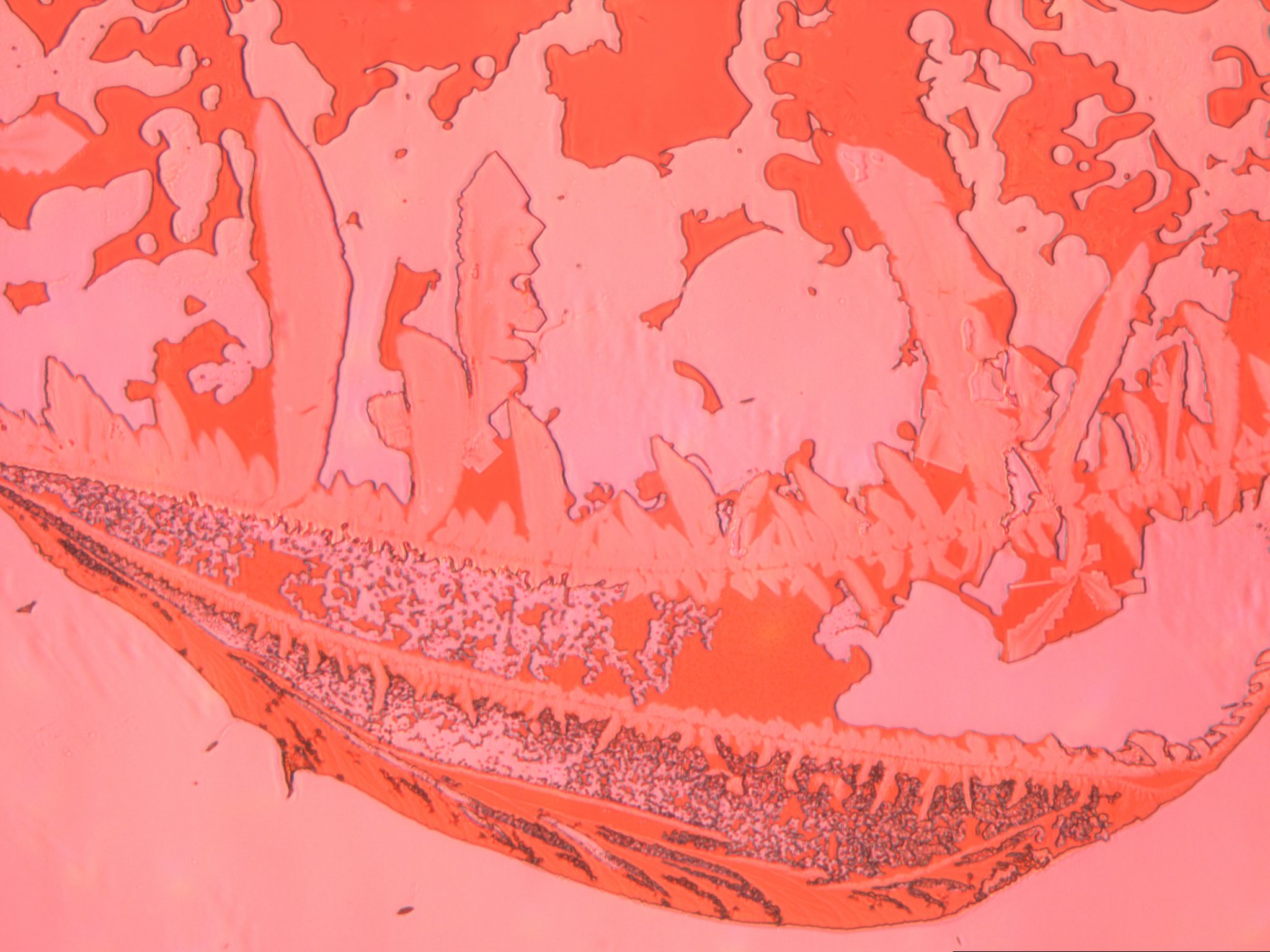
Workup of methyl orange dye
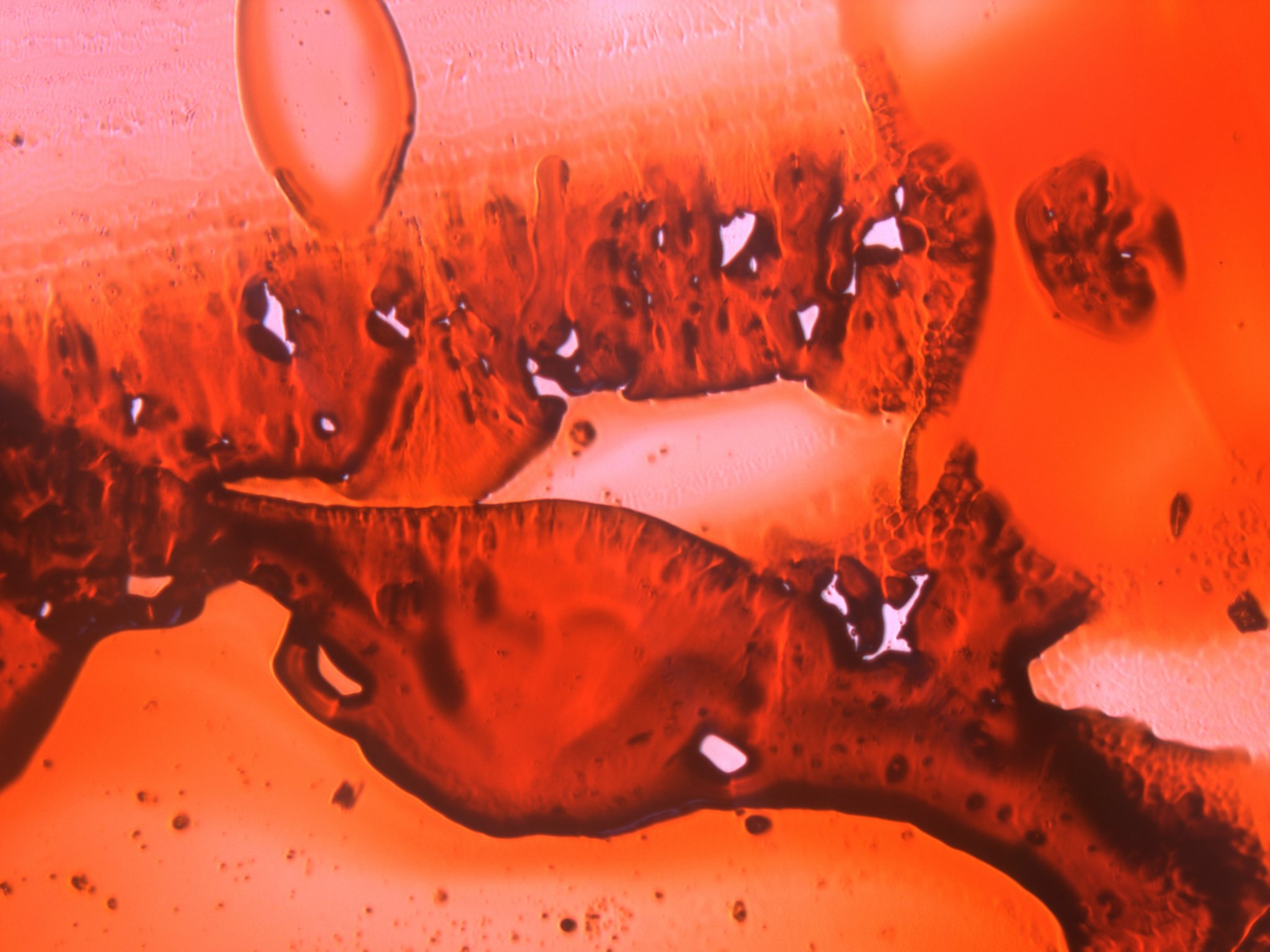
Synthesis of ferroine from phenanthroline